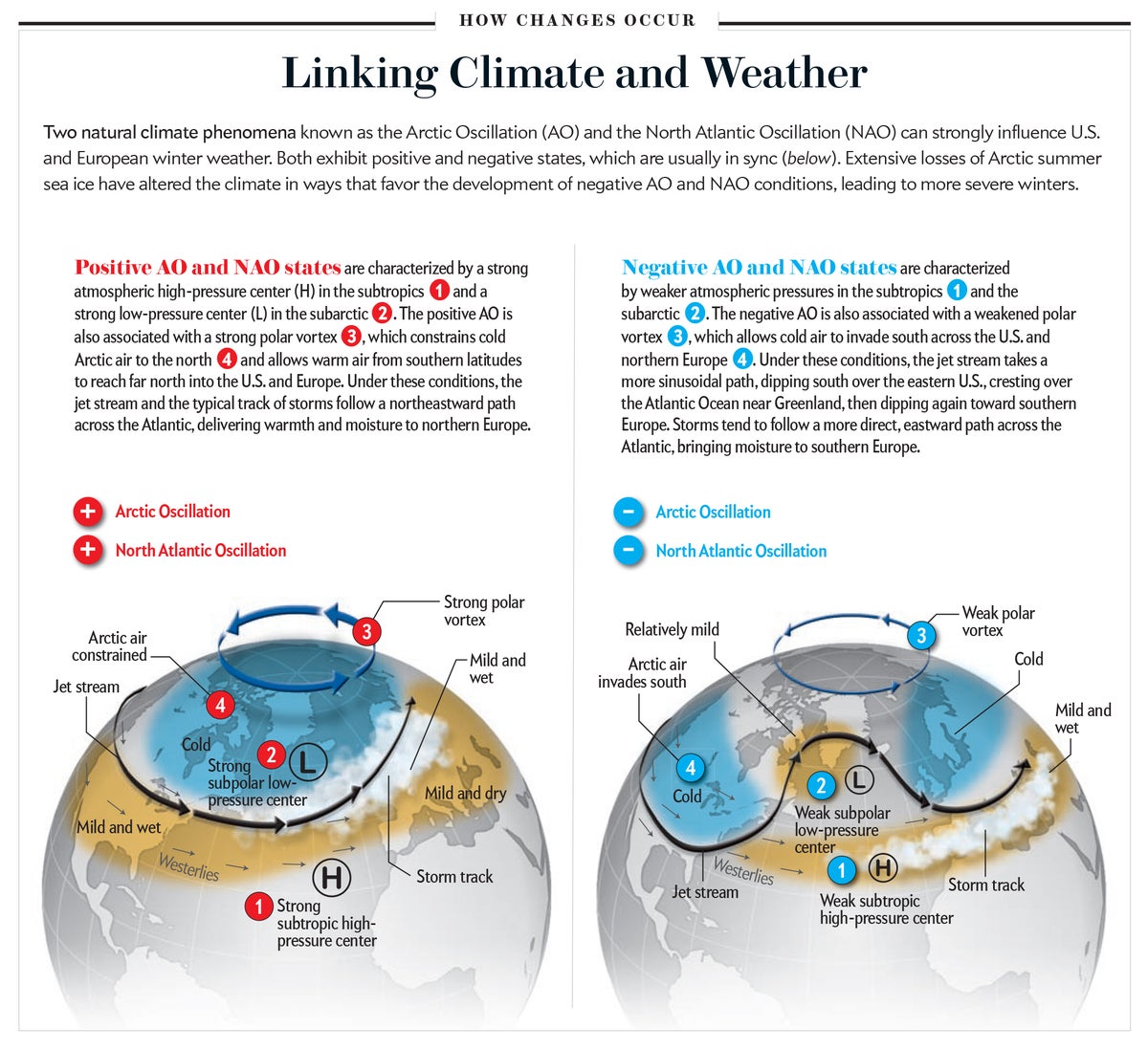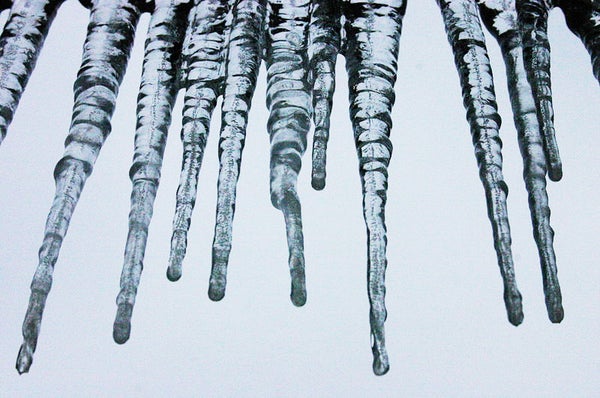This article was published in Scientific American’s former blog network and reflects the views of the author, not necessarily those of Scientific American
Editor’s Note (5/8/20): The deep freeze descending on the U.S. Northeast this Mother's Day weekend is being supplied by the polar vortex, which has become a nemesis for the region. The vortex became famous when it iced the eastern region of the country in 2014. Our explanation of the phenomenon, written at that time, is on target for this week as well.
As I write these words, temperatures across half the U.S. are plummeting like a rock. Extreme lows are forecast by tonight: -32 degrees Fahrenheit in Fargo, N.D.; -21 degrees F in Madison, Wisc.; -15 degrees F in Chicago and Indianapolis, according to the National Weather Service. Wind chills will reach a bizarre 60 degrees below zero F in some places, freezing exposed skin within one minute. That number is more typical for Mars—at night, according to the Curiosity rover NASA has free-wheeling over there.
As each hour passes, more and more television and radio reporters are attributing the insane cold to a “polar vortex” up in northern Canada. Vortex, yes, but upper Canada? Not exactly. One forecaster called the beast a hurricane in the Arctic, which is dramatic but wrong. So what is this mysterious marvel and why is it invading America?
On supporting science journalism
If you're enjoying this article, consider supporting our award-winning journalism by subscribing. By purchasing a subscription you are helping to ensure the future of impactful stories about the discoveries and ideas shaping our world today.
The polar vortex is a prevailing wind pattern that circles the Arctic, flowing from west to east all the way around the Earth. It normally keeps extremely cold air bottled up toward the North Pole. Occasionally, though, the vortex weakens, allowing the cold air to pour down across Canada into the U.S., or down into other regions such Eastern Europe. In addition to bringing cold, the air mass can push the jet stream—the band of wind that typically flows from the Pacific Ocean across the U.S.—much further south as well. If the jet stream puts up a fight, the moisture it carries can fall out as heavy snow, which atmospheric scientists say is the circumstance that caused the February 2010 “snowmageddon” storm that shut down Washington, D.C.
But why does the vortex weaken? Now it gets interesting. More and more Arctic sea ice is melting during summer months. The more ice that melts, the more the Arctic Ocean warms. The ocean radiates much of that excess heat back to the atmosphere in winter, which disrupts the polar vortex. Data taken over the past decade indicate that when a lot of Arctic sea ice disappears in the summer, the vortex has a tendency to weaken over the subsequent winter, if related atmospheric conditions prevail over the northern Atlantic Ocean. The situation looks something like that shown in the graphic below. (For a full explanation, see the Scientific American article that accompanies the graphic.)
Although the extent of summer sea ice in the Arctic varies year to year, overall it has been disappearing to a notable degree since 2007 and it is forecast to continue to vanish even further. That could mean more trouble for the polar vortex, and more frigid outbreaks—a seeming contradiction to “global warming,” perhaps, but not for “global weirding,” also known as climate change.

Credit: XNR Productions
